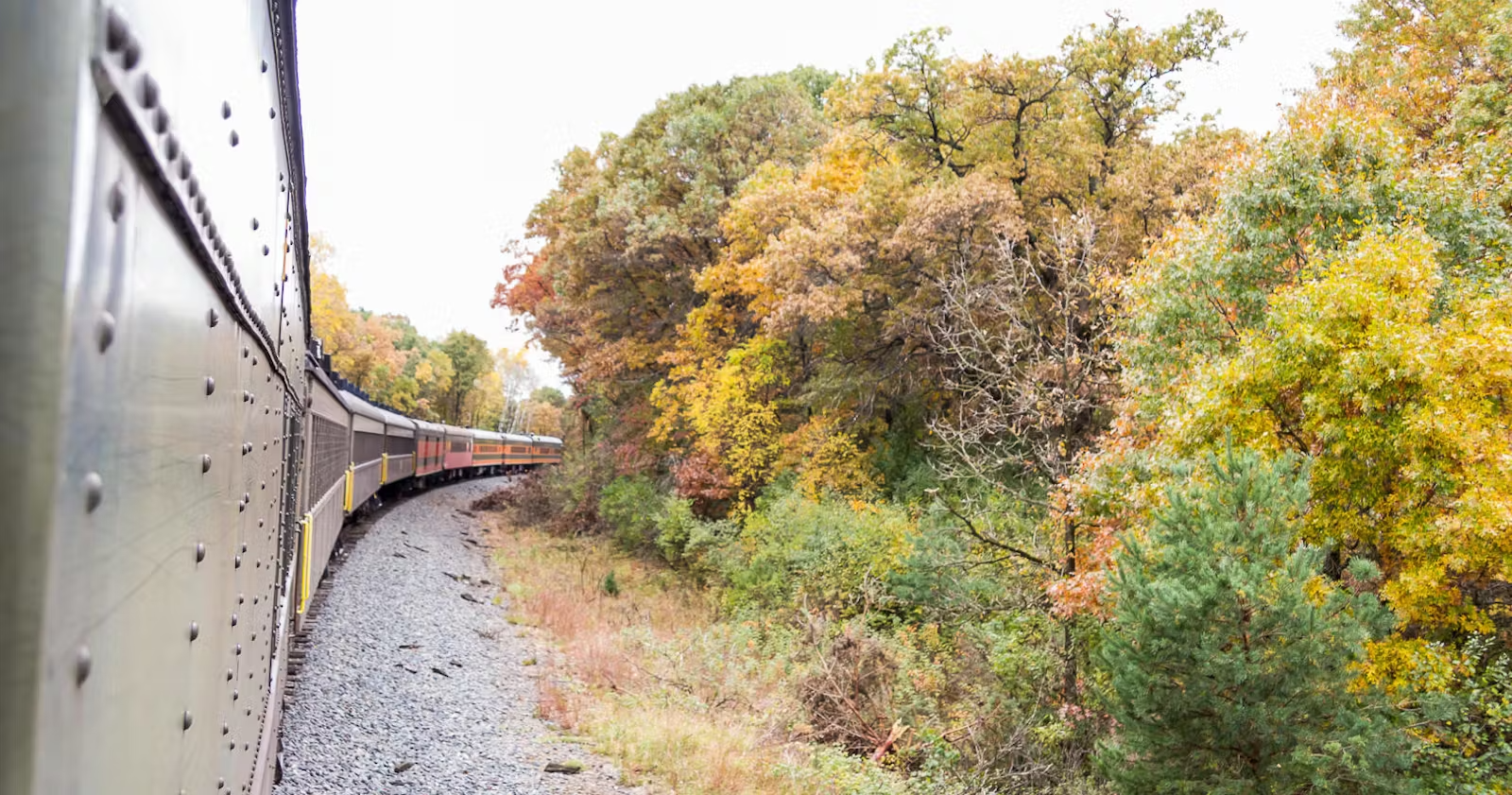About Us
Museum Hours: Wednesdays & Saturdays 10-4
The Minnesota Transportation Museum holds a unique place in the city of St. Paul, state of Minnesota, and for the nation. The Jackson Street Roundhouse is recognized on the National Register of Historic Places and is home to a rich array of historical collections from active railcar restorations to railway memorabilia. The museum also operates seasonal passenger train rides through the St. Croix River Valley on Osceola & St. Croix Valley Railway. As one of the last operating roundhouses built by James J. Hill to serve the Great Northern Railway, the Jackson Street Roundhouse had a direct role in the economic and cultural development of our region and the westward expansion of the United States.
To educate, inspire, entertain, and engage visitors by sharing the story of rail transportation history in the Upper Midwest region and how its evolution shapes our lives, culture(s), economy, and society.
Collect, preserve, restore, and provide resources for visitors, researchers, partners, our communities, and future generations
- Enhance learning opportunities that lead to knowledge and employment
- Provide friendly and enjoyable experiences by creating hands-on learning opportunities
- Operate real transportation equipment in the form of demonstrations, immersion rides, and other activities that promote experiential learning
- Present our message and knowledge in an engaging manner
- Inspire passion for railroading by showing its importance and success in our society and the nation's development.
Minnesota Transportation Museum (MTM) is located at the historic Jackson Street Roundhouse. This building was originally a steam engine maintenance facility for The Great Northern Railroad.
The Roundhouse was built in 1907 and was one of the last roundhouses built by the "Empire Builder," James J. Hill. It replaced a smaller wooden engine-house of Saint Paul & Pacific. The Roundhouse was part of a large shop complex built in the 1880s.
Located near downtown Saint Paul just north and east of the State Capitol, the complex had been sold by Great Northern in 1960. The Roundhouse was then remodeled as a warehouse/industrial building. All the tracks were removed and an addition was built where the turntable used to be.
MTM took possession of the Roundhouse in 1986, acquiring a substantial mortgage. Jackson Street was restored as an operating roundhouse, but with several changes. It is MTM's back shop, but it also houses exhibitions, archives, an audio-visual theater, a meeting room, and offices. The turntable was re-installed in 2001, and the connection with the current day BNSF was restored along with five yard tracks. BNSF cleaned up the environmental pollution which was mostly petroleum in the groundwater. The large mortgage was paid off through the generous financial support of longtime director Arthur E. Pew III and others.
The Museum at Jackson Street Roundhouse opened in 1999. In March of that year, MTM hired its first paid Executive Director, and the administrative offices moved into a renovated space, shared with the Great Northern and Northern Pacific Historical Societies. They and MTM are creating an archive with climate-controlled space and a combined cataloging system.

